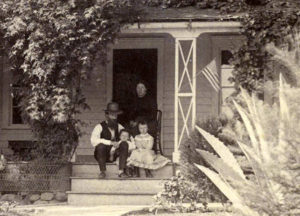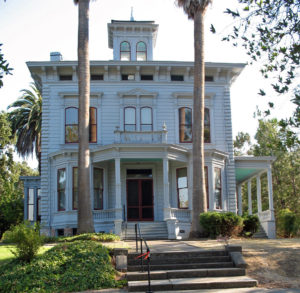August 31, 1964, was a busy day for the National Park Service. On that day, four National Historic Sites and one National Memorial were signed into existence by President Lyndon Johnson. The sites include Fort Lamed (Kansas), the Allegheny Portage Railroad (Pennsylvania), the Johnstown Flood Memorial (Pennsylvania), Saint-Gaudens (New Hampshire), and the John Muir homestead (California).
Most of us know John Muir as the Father of American Conservation, who successfully fought for the creation of Yosemite National Park. We picture Muir as a wilderness-roaming hermit, dressed like a vagabond with an unkempt flowing beard, sporting a tree branch as a walking stick. Yet that tells only one side of a remarkable man.
John Muir was all that—a lover of wilderness and generally oblivious to his appearance—but he was also a great family man, successful farmer and fruit rancher, and a favorite of people and parties. He married his great love, Louisa Strentzel in 1880, when he was 42 years old and already a well-known nature writer. Louie, as Muir called her, was the daughter of a wealthy rancher and farmer whose estate in Martinez, California, supplied stores and restaurants in San Francisco with food, fruits, and nuts. Muir joined his wife on the farm, and for the next decade he traveled little and wrote nothing. He was a dedicated family man and farmer—“a proper cultivated plant,” as he happily described himself. He and Louie had two daughters, Wanda and Helen, who became the focus of his life.

Muir gradually took over the running of his father-in-law’s 2600-acre estate in the Alhambra Valley. He used his remarkable mechanical and organizational skills to create a thriving and highly profitable enterprise. Along the way, the Muir’s became part of genteel society, a part of life that John Muir, the supposed hermit, enjoyed greatly. He was the life of every party, as a guest at one party described him:
“Scarcely would the guests be seated when Muir would begin, as if thinking aloud, pouring forth a stream of reminiscence, description, exposition, all relieved with quiet humor, seasoned with pungent satire, starred and rainbowed with poetic fantasy.”
The Muirs eventually took up residence in the main house of the property, where they lived for 25 years. The house and 335 acres of the original family estate now comprise the John Muir National Historic Site. The house had fallen into disrepair and was slated to be destroyed to make way for residential and commercial development in the 1950s. Faire and Henry Sax bought the property, repaired the home and led the effort to have the site preserved by the National Park Service. Today the site is visited by nearly 50,000 visitors each year, learning about the full life of John Muir, farmer, devoted husband and father, life of the party—and conservationist.

References:
John Muir Association. About John Muir. Available at: http://www.johnmuirassociation.org/php/aboutJM.php. Accessed August 30, 2017.
Nielsen, Larry A. 2917. Nature’s Allies: Eight Conservationists Who Changed Our World. Island Press, Washington, DC. 255 pages.
